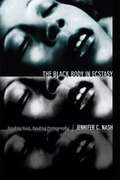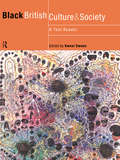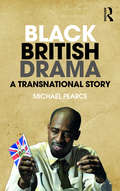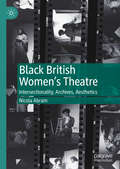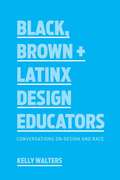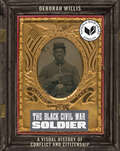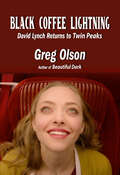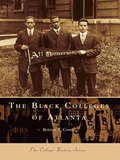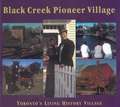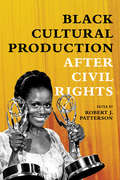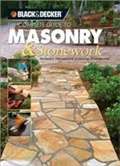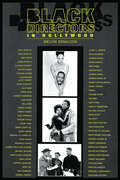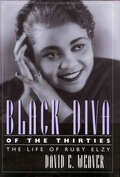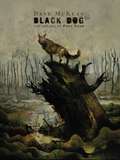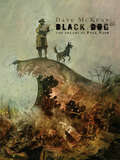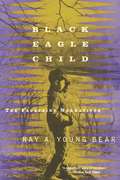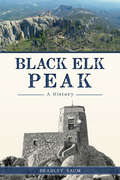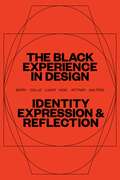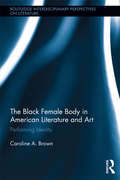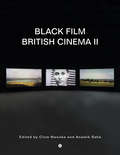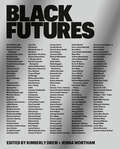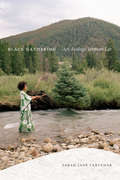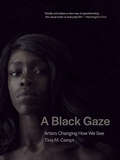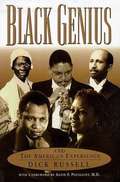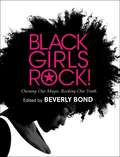- Table View
- List View
The Black Body in Ecstasy: Reading Race, Reading Pornography
by Jennifer Christine NashIn The Black Body in Ecstasy, Jennifer C. Nash rewrites black feminism's theory of representation. Her analysis moves beyond black feminism's preoccupation with injury and recovery to consider how racial fictions can create a space of agency and even pleasure for black female subjects. Nash's innovative readings of hardcore pornographic films from the 1970s and 1980s develop a new method of analyzing racialized pornography that focuses on black women's pleasures in blackness: delights in toying with and subverting blackness, moments of racialized excitement, deliberate enactments of hyperbolic blackness, and humorous performances of blackness that poke fun at the fantastical project of race. Drawing on feminist and queer theory, critical race theory, and media studies, Nash creates a new black feminist interpretative practice, one attentive to the messy contradictions--between delight and discomfort, between desire and degradation--at the heart of black pleasures.
Black British Culture and Society: A Text Reader
by Kwesi OwusuBlack British Culture and Society brings together in one indispensable volume key writings on the Black community in Britain, from the 'Windrush' immigrations of the late 1940s and 1950s to contemporary multicultural Britain. Combining classic writings on Black British life with new, specially commissioned articles, Black British Culture and Society records the history of the post-war African and Caribbean diaspora, tracing the transformations of Black culture in British society.Black British Culture and Society explores key facets of the Black experience, charting Black Britons' struggles to carve out their own identity and place in an often hostile society. The articles reflect the rich diversity of the Black British experience, addressing economic and social issues such as health, religion, education, feminism, old age, community and race relations, as well as Black culture and the arts, with discussions of performance, carnival, sport, style, literature, theatre, art and film-making. The contributors examine the often tense relationship between successful Black public figures and the media, and address the role of the Black intellectual in public life. Featuring interviews with noted Black artists and writers such as Aubrey Williams, Mustapha Matura and Caryl Phillips, and including articles from key contemporary thinkers, such as Stuart Hall, A. Sivanandan, Paul Gilroy and Henry Louis Gates, Black British Culture and Society provides a rich resource of analysis, critique and comment on the Black community's distinctive contribution to cultural life in Britain today.
Black British Drama: A Transnational Story
by Michael PearceBlack British Drama: A Transnational Story looks afresh at the ways black theatre in Britain is connected to and informed by the spaces of Africa, the Caribbean and the USA. Michael Pearce offers an exciting new approach to reading modern and contemporary black British drama, examining plays by a range of writers including Michael Abbensetts, Mustapha Matura, Caryl Phillips, Winsome Pinnock, Kwame Kwei-Armah, debbie tucker green, Roy Williams and Bola Agbaje. Chapters combine historical documentation and discussion with close analysis to provide an in-depth, absorbing account of post-war black British drama situated within global and transnational circuits. A significant contribution to black British and black diaspora theatre studies, Black British Drama is a must-read for scholars and students in this evolving field.
Black British Women's Theatre: Intersectionality, Archives, Aesthetics
by Nicola AbramThis book marks a significant methodological shift in studies of black British women’s theatre: it looks beyond published plays to the wealth of material held in archives of various kinds, from national repositories and themed collections to individuals’ personal papers. It finds there a cache of unpublished manuscripts and production recordings distinctive for their non-naturalistic aesthetics. Close analysis of selected works identifies this as an intersectional feminist creative practice. Chapters focus on five theatre companies and artists, spanning several decades: Theatre of Black Women (1982-1988), co-founded by Booker Prize-winning writer Bernardine Evaristo; Munirah Theatre Company (1983-1991); Black Mime Theatre Women’s Troop (1990-1992); Zindika; and SuAndi. The book concludes by reflecting on the politics of representation, with reference to popular postmillennial playwright debbie tucker green. Drawing on new interviews with the playwrights/practitioners and their peers, this book assembles a rich, interconnected, and occasionally corrective history of black British women’s creativity. By reproducing 22 facsimile images of flyers, production programmes, photographs and other ephemera, Black British Women’s Theatre: Intersectionality, Archives, Aesthetics not only articulates a hidden history but allows its readers their own encounter with the fragile record of this vibrant past.
Black, Brown + Latinx Design Educators: Conversations on Design and Race
by Kelly WaltersIn Black, Brown + Latinx Design Educators, Kelly Walters collects twelve deeply personal interviews with graphic design educators of color who teach at colleges and universities across the United States and Canada. The book centers the unique narratives of Black, Brown, and Latinx design educators, from their childhood experiences to their navigation of undergraduate and graduate studies and their career paths in academia and practice. The interviewees represent a cross-section of ethnic and multiracial backgrounds—African American, Jamaican, Indian, Pakistani, Puerto Rican, Dominican, Mexican, and Brazilian. Their impactful stories offer invaluable perspectives for students and emerging designers of color, creating an entry point to address the complexities of race in design and bring to light the challenges of teaching graphic design at different types of public and private institutions. Interwoven throughout the book are images that maintain cultural significance, from family heirlooms to design works that highlight aspects of their cultural identities. Readers will gain insight into the multitude of experiences of Black, Brown, and Latinx design educators who teach and work in the field today.
The Black Civil War Soldier: A Visual History of Conflict and Citizenship (NYU Series in Social & Cultural Analysis #11)
by Deborah Willis&“The book aims to bring these stoic portraits of black soldiers to life . . . It&’s what Willis calls the African American experience, as well as resilience.&” —The Guardian Though both the Union and Confederate armies excluded African American men from their initial calls to arms, many of the men who eventually served were black. Simultaneously, photography culture blossomed—marking the Civil War as the first conflict to be extensively documented through photographs. In The Black Civil War Soldier, Deb Willis explores the crucial role of photography in (re)telling and shaping African American narratives of the Civil War, pulling from a dynamic visual archive that has largely gone unacknowledged. With over seventy images, The Black Civil War Soldier contains a huge breadth of primary and archival materials, many of which are rarely reproduced. The photographs are supplemented with handwritten captions, letters, and other personal materials; Willis not only dives into the lives of black Union soldiers, but also includes stories of other African Americans involved with the struggle—from left-behind family members to female spies. Willis thus compiles a captivating memoir of photographs and words and examines them together to address themes of love and longing; responsibility and fear; commitment and patriotism; and—most predominantly—African American resilience. The Black Civil War Soldier offers a kaleidoscopic yet intimate portrait of the African American experience, from the beginning of the Civil War to 1900. In combating the erasure of this often overlooked history, Willis asks how these images might offer a more nuanced memory of African-American participation in the Civil War, and in doing so, points to individual and collective struggles for citizenship and remembrance.
Black Coffee Lightning David Lynch Returns to Twin Peaks: David Lynch Returns To Twin Peaks
by Greg OlsonGreg Olson, author of David Lynch: Beautiful Dark, the essential book on Lynch' s life and art, has resided in the Twin Peaks region of the Northwest for decades, and David Lynch spent youthful years in the Northwest; both of their fathers were woodsmen. Lynch believes that the world hums with spirituality, and over a thirty-year span Lynch and Mark Frost created forty-eight hours of Twin Peaks TV and film, hypnotic cinematic music immersed in the depths and divine heights of human nature, an artistic song of the forest, America, the world, the cosmos. David Lynch is an international icon of visionary artistic innovation, humanistic thought and philanthropy, and spiritual exploration, and Twin Peaks: The Return is his magnum opus, a mytho-poetic summation of his deepest beliefs and concerns. Author Olson, in his characteristically intimate and personal way, traces the Twin Peaks currents of Lynch' s emotional-visceral storytelling, themes, imagery and sound: the way the artist and viewer share an electrified circuit of mystery and understanding. Olson details Lynch' s kinship with transcendence-seeking artists like William Blake, Walt Whitman, Jean Cocteau, Philip K. Dick and the post-World War II mystical Northwest painters. Small town values, coffee culture, the color pink, the Bible, Vedic literature, Marvel Comics Superheroes, and a Parisian camera crew wanting Olson to guide them throughTwin Peaks territory all make appearances. Olson' s chronicle includes personal interaction with Lynch, his colleagues, and the artist' s inner world of karmic balancing, reincarnation, spiritual evolution, and veneration of women. Twin Peaks centers on the abiding presence of a lost woman, Laura Palmer, the downward, then upward arc of her life, afterlife, and goddess potential. Olson. Lynch and Twin Peaks have been on parallel tracks for decades. Olson' s longtime love, Linda Bowers, died shortly before Twin Peaks: The Return aired, and his lived experience with Lynch' s art speaks to the healing power of artistic engagement.
Black Colleges of Atlanta, The (Campus History)
by Rodney T. CohenBy 1865, although Atlanta and the Confederacy still lay wounded in the wake of the Union victory, black higher education began its thrust for recognition. Some of the first of the American colleges formed specifically for the education of black students were founded in Atlanta, Georgia. These schools continue, over a century later, to educate, train and inspire. Through an engaging collection of images and informative captions, their story begins to unfold. Atlanta University was the pioneer college for blacks in the state of Georgia. Founded in 1865, it was followed by Morehouse College in 1867, Clark University in 1869, and Spelman and Morris Brown Colleges in 1881. By 1929, Atlanta University discontinued undergraduate work and affiliated with Morehouse and Spelman in a plan known as the "Atlanta University System." A formal agreement of cooperation including all of the Atlanta colleges occurred in 1957, solidifying the common goal and principles each school was founded upon-to make literate the black youth of America. Today, the shared resources of each institution provide a unique and challenging experience for young Africa Americans seeking higher education. The schools boast a long and distinguished list of alumni and scholars, including W.E.B. DuBois, James Weldon Johnson, Martin Luther King, Henry O. Tanner, and C. Eric Lincoln.
Black Creek Pioneer Village: Toronto's Living History Village
by Helma Mika Nick Mika Gary ThompsonBlack Creek Pioneer Village: Toronto’s Living History Village is a recreation of a typical crossroads community found in Southern Ontario during the 1800s. Nestled on 56 acres of tranquility, the village is a step-back-in-time, a respite from the towering buildings and bustling traffic of the 21st century. Here, visitors discover the joys and daily realities of living in early Ontario. Here at the village, the sights, sounds and smells are tangible reminders of our past. Meet the blacksmith, the tinsmith, the weaver, the miller, the printer … Meet the people who "live" at Black Creek and bring our yesteryears to life.
Black Cultural Production after Civil Rights
by Robert PattersonThe post-civil rights era of the 1970s offered African Americans an all-too-familiar paradox. Material and symbolic gains contended with setbacks fueled by resentment and reaction. African American artists responded with black approaches to expression that made history in their own time and continue to exercise an enormous influence on contemporary culture and politics.This collection's fascinating spectrum of topics begins with the literary and cinematic representations of slavery from the 1970s to the present. Other authors delve into visual culture from Blaxploitation to the art of Betye Saar to stage works like A Movie Star Has to Star in Black and White as well as groundbreaking literary works like Corregidora and Captain Blackman. A pair of concluding essays concentrate on institutional change by looking at the Seventies surge of black publishing and by analyzing Ntozake Shange's for colored girls… in the context of current controversies surrounding sexual violence. Throughout, the writers reveal how Seventies black cultural production anchors important contemporary debates in black feminism and other issues while spurring the black imagination to thrive amidst abject social and political conditions.Contributors: Courtney Baker, Soyica Diggs Colbert, Madhu Dubey, Nadine Knight, Monica White Ndounou, Kinohi Nishikawa, Samantha Pinto, Jermaine Singleton, Terrion L. Williamson, and Lisa Woolfork
Black & Decker: The Complete Guide to Masonry and Stonework
by Creative Publishing InternationalFeatures all new, state-of-the-art information on decorative concrete finishes, including acid coloring, stamping, and using cementitious paints. Another new section shows easy methods for casting concrete in forms to create countertops, garden benches, and other accessories.
Black Directors in Hollywood
by Melvin DonalsonThis book offers a first comprehensive look at the work of black directors in Hollywood, from pioneers such as Gordon Parks, Melvin Van Peebles, and Ossie Davis to current talents including Spike Lee, John Singleton, Kasi Lemmons, and Carl Franklin. Discussing 67 individuals and over 135 films, Melvin Donalson thoroughly explores how black directors' storytelling skills and film techniques have widened both the thematic focus and visual style of American cinema. Assessing the meanings and messages in their films, he convincingly demonstrates that black directors are balancing Hollywood's demand for box office success with artistic achievement and responsibility to ethnic, cultural, and gender issues.
Black Diva of the Thirties: The Life of Ruby Elzy (Willie Morris Books in Memoir and Biography)
by David E. WeaverWhile undergoing routine surgery to remove a benign tumor, Ruby Elzy died. She was only thirty-five. Had she lived, she would have been one of the first Black artists to appear in grand opera. Although now in the shadows, she was a shining star in her day. She entertained Eleanor Roosevelt in the White House. She was Paul Robeson's leading lady in the movie version of The Emperor Jones. She starred in Birth of the Blues opposite Bing Crosby and Mary Martin. She sang at Harlem's Apollo Theater and in the Hollywood Bowl. Her remarkable soprano voice was known to millions over the radio. She was personally chosen by George Gershwin to create one of the leading roles in his masterpiece, that of Serena in the original production of Porgy and Bess. Her signature song was the vocally demanding “My Man's Gone Now.” From obscurity she had risen to great heights. Ruby Pearl Elzy (1908-1943) was born in abject poverty in Pontotoc, Mississippi. Her father abandoned the family when she was five, leaving her mother, a strong, devout woman, to raise four small children. Ruby first sang publicly at the age of four and even in childhood dreamed of a career on the stage. Good fortune struck when a visiting professor, overwhelmed upon hearing her beautiful voice at Rust College in Mississippi, arranged for her to study music at Ohio State University. Later, on a Rosenwald Fellowship, she enrolled at the Juilliard School in New York City. After more than eight hundred performances in Porgy and Bess, she set her sights on a huge goal, to sing in grand opera. She was at the peak of her form. While she was preparing for her debut in the title role of Verdi's Aida, tragedy struck. During her brief career, Ruby Elzy was in the top tier of American sopranos and a precursor who paved a way for Leontyne Price, Jessye Norman, Kathleen Battle, and other black divas of the operatic stage. This biography acknowledges her exceptional talent, recognizes her contribution to American music, and tells her tragic yet inspiring story.
Black Dog: The Dreams of Paul Nash
by Dave McKeanA new original graphic novel by DAVE McKEAN!Best known for his collaborations with Neil Gaiman, Dave McKean defied expectations with his stunning debut as writerand artist in Cages, winner of multiple awards for Best Graphic Album. Dark Horse proudly presents a new original graphic novel by the legendary artist based on the life of Paul Nash, a surrealist painter during World War I. The Dreams of Paul Nash deals with real soldiers&’ memoirs, and all the stories add up to a moving piece about how war and extreme situations change us and how we deal with the resultant pain—in Nash&’s case, by turning his landscapes into powerful and fantastical &“psychoscapes.
Black Dog: The Dreams of Paul Nash (Second Edition)
by Dave McKeanNew edition with bonus material by Dave McKean!Dark Horse proudly presents a new, second edition, of the graphic novel by legendary artist Dave McKean, based on the life of Paul Nash, a surrealist painter during World War 1. The Dreams of Paul Nash deals with real soldier's memoirs and all the stories add up to a moving piece about how war and extreme situations change us, how we deal with that pain, and, in Nash's case, how he responded by turning his landscapes into powerful and fantastical psychoscapes. The second edition of Black Dog: The Dreams of Paul Nash features a new cover by Dave McKean, along with 15 pages of new bonus material examining the creation of the book.
Black Eagle Child
by Ray A. Young BearStories of life on a Native American settlement during the 50s,60s and 70s. Told in poetry in prose.
Black Elk Peak: A History (Natural History)
by Bradley SaumThe history of Black Elk Peak—previously known as Hinhan Kaga and, more recently, as Harney Peak—remained segmented and scattered throughout the shadows of antiquity, until now. The natural landmark’s namesake, Black Elk, experienced his great vision here, solidifying his status as a Sioux holy man. Obstructed by the insurmountable granite, General Custer and his horse nearly summited during the 1874 expedition. On that granite, sculptor Gutzon Borglum made the decision to carve a grand monument into the face of nearby Mount Rushmore. Prior to serving as the first Pine Ridge Reservation Indian agent and then mayor of Rapid City, Valentine McGillycuddy documented his ascent to the peak in 1875, where his ashes would come to rest. Author Bradley Saum chronicles the unique and untold stories that are intrinsically linked to the highest point in the Black Hills.
The Black Experience in Design: Identity, Expression & Reflection
by Anne H. BerryThe Black Experience in Design spotlights teaching practices, research, stories, and conversations from a Black/African diasporic lens. Excluded from traditional design history and educational canons that heavily favor European modernist influences, the work and experiences of Black designers have been systematically overlooked in the profession for decades. However, given the national focus on diversity, equity, and inclusion in the aftermath of the nationwide Black Lives Matter protests in the United States, educators, practitioners, and students now have the opportunity—as well as the social and political momentum—to make long-term, systemic changes in design education, research, and practice, reclaiming the contributions of Black designers in the process.The Black Experience in Design, an anthology centering a range of perspectives, spotlights teaching practices, research, stories, and conversations from a Black/African diasporic lens. Through the voices represented, this text exemplifies the inherently collaborative and multidisciplinary nature of design, providing access to ideas and topics for a variety of audiences, meeting people as they are and wherever they are in their knowledge about design. Ultimately, The Black Experience in Design serves as both inspiration and a catalyst for the next generation of creative minds tasked with imagining, shaping, and designing our future.
The Black Female Body in American Literature and Art: Performing Identity (Routledge Interdisciplinary Perspectives on Literature)
by Caroline BrownThis book examines how African-American writers and visual artists interweave icon and inscription in order to re-present the black female body, traditionally rendered alien and inarticulate within Western discursive and visual systems. Brown considers how the writings of Toni Morrison, Gayl Jones, Paule Marshall, Edwidge Danticat, Jamaica Kincaid, Andrea Lee, Gloria Naylor, and Martha Southgate are bound to such contemporary, postmodern visual artists as Lorna Simpson, Carrie Mae Weems, Kara Walker, Betye Saar, and Faith Ringgold. While the artists and authors rely on radically different media—photos, collage, video, and assembled objects, as opposed to words and rhythm—both sets of intellectual activists insist on the primacy of the black aesthetic. Both assert artistic agency and cultural continuity in the face of the oppression, social transformation, and cultural multiplicity of the late twentieth and early twenty-first centuries. This book examines how African-American performative practices mediate the tension between the ostensibly de-racialized body politic and the hyper-racialized black, female body, reimagining the cultural and political ground that guides various articulations of American national belonging. Brown shows how and why black women writers and artists matter as agents of change, how and why the form and content of their works must be recognized and reconsidered in the increasingly frenzied arena of cultural production and political debate.
Black Film British Cinema II
by Clive Nwonka and Anamik SahaThe politics of race in British screen culture over the last 30 years vis-a-vis the institutional, textual, cultural and political shifts that have occurred during this period.Black Film British Cinema II considers the politics of blackness in contemporary British cinema and visual practice. This second iteration of Black Film British Cinema, marking over 30 years since the ground-breaking ICA Documents 7 publication in 1988, continues this investigation by offering a crucial contemporary consideration of the textual, institutional, cultural and political shifts that have occurred from this period. It focuses on the practices, values and networks of collaborations that have shaped the development of black film culture and representation. But what is black British film? How do such films, however defined, produce meaning through visual culture, and what are the political, social and aesthetic motivations and effects? How are the new forms of black British film facilitating new modes of representation, authorship and exhibition? Explored in the context of film aesthetics, curatorship, exhibition and arts practice, and the politics of diversity policy, Black Film British Cinema II provides the platform for new scholars, thinkers and practitioners to coalesce on these central questions. It is explicitly interdisciplinary, operating at the intersections of film studies, media and communications, sociology, politics and cultural studies. Through a diverse range of perspectives and theoretical interventions that offer a combination of traditional chapters, long-form essays, shorter think pieces, and critical dialogues, Black Film British Cinema II is a comprehensive, sustained, wide ranging collection that offers new framework for understanding contemporary black film practices and the cultural and creative dimensions that shape the making of blackness and race.ContributorsBidisha, Ashley Clark, Shelley Cobb, James Harvey, Melanie Hoyes, Maryam Jameela, Kara Keeling, Oslem Koskal, Rabz Lansiquot, Sarita Malik, Richard Martin, So Mayer, Alessandra Raengo, Richard T. Rodríguez, Tess S. Skadegård Thorsen, Natalie Wreyford
Black Futures
by Kimberly Drew Jenna WorthamAn archive of collective memory and exuberant testimonyA luminous map to navigate an opaque and disorienting presentAn infinite geography of possible futures What does it mean to be Black and alive right now?Kimberly Drew and Jenna Wortham have brought together this collection of work—images, photos, essays, memes, dialogues, recipes, tweets, poetry, and more—to tell the story of the radical, imaginative, provocative, and gorgeous world that Black creators are bringing forth today. The book presents a succession of startling and beautiful pieces that generate an entrancing rhythm: Readers will go from conversations with activists and academics to memes and Instagram posts, from powerful essays to dazzling paintings and insightful infographics. In answering the question of what it means to be Black and alive, Black Futures opens a prismatic vision of possibility for every reader.
Black Gathering: Art, Ecology, Ungiven Life (Black Outdoors: Innovations in the Poetics of Study)
by Sarah Jane CervenakIn Black Gathering Sarah Jane Cervenak engages with Black artists and writers who create alternative spaces for Black people to gather free from interruption or regulation. Drawing together Black feminist theory, critical theories of ecology and ecoaesthetics, and Black aesthetics, Cervenak shows how novelists, poets, and visual artists such as Gayl Jones, Toni Morrison, Clementine Hunter, Samiya Bashir, and Leonardo Drew advance an ecological imagination that unsettles Western philosophical ideas of the earth as given to humans. In their aestheticization and conceptualization of gathering, these artists investigate the relationships among art, the environment, home, and forms of Black togetherness. Cervenak argues that by offering a formal and conceptual praxis of gathering, Black artists imagine liberation and alternative ways of being in the world that exist beyond those Enlightenment philosophies that presume Black people and earth as given to enclosure and ownership.
A Black Gaze: Artists Changing How We See
by Tina M. CamptExamining the work of contemporary Black artists who are dismantling the white gaze and demanding that we see--and see Blackness in particular--anew.In A Black Gaze, Tina Campt examines Black contemporary artists who are shifting the very nature of our interactions with the visual through their creation and curation of a distinctively Black gaze. Their work--from Deana Lawson's disarmingly intimate portraits to Arthur Jafa's videos of the everyday beauty and grit of the Black experience, from Khalil Joseph's films and Dawoud Bey's photographs to the embodied and multimedia artistic practice of Okwui Okpakwasili, Simone Leigh, and Luke Willis Thompson--requires viewers to do more than simply look; it solicits visceral responses to the visualization of Black precarity. Campt shows that this new way of seeing shifts viewers from the passive optics of looking at to the active struggle of looking with, through, and alongside the suffering--and joy--of Black life in the present. The artists whose work Campt explores challenge the fundamental disparity that defines the dominant viewing practice: the notion that Blackness is the elsewhere (or nowhere) of whiteness. These artists create images that flow, that resuscitate and revalue the historical and contemporary archive of Black life in radical ways. Writing with rigor and passion, Campt describes the creativity, ingenuity, cunning, and courage that is the modus operandi of a Black gaze.
Black Genius and the American Experience
by Dick RussellThe findings from wide-ranging interviews and careful historical research, Black Genius explores the roots of black achievement in America. The results are surprising and inspiring. Interweaving past and present, beginning with this country's inception, Russell covers the importance of continuity and tradition in nurturing black artists, scientists, and leaders. Here are memorable portraits of Wynton Marsalis, Ralph Ellison, Louis Armstrong, Toni Morrison, Duke Ellington, James Baldwin, Paul Robeson, Muhammad Ali, Lois Mailou-Jones, and other black notables. Through their eyes, we see how they were inspired, fostered, and encouraged by their mentors, how the creative tradition was passed from one generation to the next. This great theme of interconnectedness is played out, for example, in Wynton Marsalis's links to not only Ellington and Armstrong, but also, through the venerable author Albert Murray, to Ellison and the artist Romare Bearden. In addition to these well-known figures, Russell also rediscovers less familiar ones: writers, activists, scientists, and artists whose reputations may be underrecognized.
Black Girls Rock!: Owning Our Magic. Rocking Our Truth.
by Beverly BondFrom the award-winning entrepreneur, culture leader, and creator of the BLACK GIRLS ROCK! movement comes an inspiring and beautifully designed book that pays tribute to the achievements and contributions of black women around the world.Fueled by the insights of women of diverse backgrounds, including Michelle Obama, Angela Davis, Shonda Rhimes, Misty Copeland Yara Shahidi, and Mary J. Blige, this book is a celebration of black women’s voices and experiences that will become a collector’s items for generations to come. Maxine Waters shares the personal fulfillment of service. Moguls Cathy Hughes, Suzanne Shank, and Serena Williams recount stories of steadfastness, determination, diligence, dedication and the will to win. Erykah Badu, Toshi Reagon, Mickalane Thomas, Solange Knowles-Ferguson, and Rihanna offer insights on creativity and how they use it to stay in tune with their magic. Pioneering writers Rebecca Walker, Melissa Harris-Perry, and Joan Morgan speak on modern-day black feminist thought. Lupita Nyong’o, Susan Taylor, and Bethann Hardison affirm the true essence of holistic beauty. And Iyanla Vanzant reinforces Black Girl Magic in her powerful pledge. Through these and dozens of other unforgettable testimonies, Black Girls Rock! is an ode to black girl ambition, self-love, empowerment, and healing. Pairing inspirational essays and affirmations with lush, newly commissioned and classic photography, Black Girls Rock!: Owning Our Magic and Rocking Our Truth is not only a one-of-a-kind celebration of the diversity, fortitude, and spirituality of black women but also a foundational text that will energize and empower every reader.
